We sincerely hope that each of you, our readers, will greatly enjoy and appreciate this article we present to you about these 5 Awesome Australian Lepidoptera. It was certainly our pleasure to compile the information for you. May it provide you with both education and increased awareness.
Amazing though they are, these few species listed herein represent only a portion of the natural wonders found throughout the region, though. Yet, it’s our belief that they serve as excellent representations of the wonders found here. Check out some of our other articles for similar marvels.
Australian Painted Lady
Australian Painted Lady Facts
- Leading off this article about these 5 Awesome Australian Lepidoptera we present the gorgeous creature known as the Australian Painted Lady.
- This gorgeous invertebrate remains most frequently referred to by the informative common name that we’ve chosen to use here. The delicate beauty does have a few other general names, though. Those include such diverse terms as Cosmopolitan and Thistle Butterfly.
- Within scientific circles, however, it’s probably much known better by its purely technical title. Thankfully, that’s an extremely easy one for the layperson to pronounce. That’s because this marvel of Nature and evolution presently bears the official moniker of Vanessa kershawi.
- It received that specific name due to the efforts of the well respected Irish zoologist, Sir Frederick McCoy. The noted professional made the first formal acknowledgement of it as a separate and distinct species. That scientifically noteworthy event occurred in the year 1868.
- This gorgeous Lepidoptera often serves as a source of confusion and conflict among entomologists. That’s true since it’s very similar to a much more widely spread species. Many researchers believe it should be considered as only a subspecies of that better-known insect.
- The beautiful Australian Painted Lady appears to be maintaining a population base that’s both stable and sufficient. That pleasant also seems to hold true throughout the entirety of its range. The IUCN, therefore, presently has no listing for it on the Red List of Threatened Species.
- It nevertheless faces several possible threats to its continued existence as a species. In this, it follows the pattern of most species. The majority of these perils stem from the actions of humans. They include such dangers as habitat loss and the increasing effects of climate change.
Australian Painted Lady Physical Description
The visually stunning Australian Painted Lady is a wonder of Nature that understandably captures one’s interest easily. It does so primarily due to its appearance, though. That’s because, all other marvelous aspects aside, it ranks as an approximately average-sized butterfly species.
Interestingly, the Arthropod differs somewhat from many, though not all, related invertebrates. That’s true since it displays no easily noticeable degree of the physiological characteristic of sexual dimorphism. This results in it being extremely difficult for non-experts to distinguish the genders.
Individuals of both sexes attain an average wingspan measuring roughly 2 in (5 cm). This size actually makes it slightly smaller than the very similar species sharing the same range that leads to the previously mentioned issue. It’s among the main reasons some consider it to be separate.
The typically elongated body of this remarkable Lepidoptera generally shows entirely as an extremely dark brown, almost black. Uniquely, though, the tips of the long antennae display a bright white at the tip. Like many related creatures, that body possesses a covering of fine, soft hairs.
It’s without doubt the wings of the lovely Australian Painted Lady that garner the most appreciation, however. The background color consists of a brown shade. This, though, turns to a brick-red shade, crossed by black bands. Its forewings present as black, with four white dots and a white bar.
Meanwhile, the hindwings of the butterfly present four small round eyespots at the base. These also show a blue center for several. The underwings of the insect, though, display an almost identical pattern. However, the base of the underwings show a brick red color, instead of the brown.
- Kingdom: Animalia
- Phylum: Arthropoda
- Class: Insecta
- Order: Lepidoptera
- Family: Nymphalidae
- Genus: Vanessa
- Species: V. kershawi
Australian Painted Lady Distribution, Habitat, and Ecology
The startling beauty known as the Australian Painted Lady evolved as native to a somewhat limited section of the surface of our globe. That immediate setting likely won’t surprise anyone, given its name. That’s because, as that name implies, it’s mainly native to the continent of Australia.
Yet that’s not the sole location for this wonder of Nature. Perhaps riding the prevalent westerly winds of the region, it’s also present on several islands located in the area. Most prominently, that includes New Zealand. It’s not currently known if the insect ever appeared elsewhere.
This surprisingly impressive invertebrate helpfully evolved very generalized habitat requirements. Essentially, it appears anywhere in its range with the proper conditions. Primarily, this consists of the presence of relatively large quantities of plants with nectar producing blooms to feed on.
Intriguingly, in truly heavily populated areas, its zone of habitation often consists of backyard gardens and parks. This occurs due to the fragmentation of its natural feeding grounds by human urbanization. Away from such areas, however, it often frequents sites such as open meadows.
The magnificent Australian Painted Lady possesses an ecology very similar to its numerous related species. Often the same plant serves as food for the adult, and host plant for the larvae. Common examples include such plants Banskia, Bottlebrush, Native Finger Lime, as well as Eucalyptus.
Following its mating, the females of the marvel lay their eggs on appropriate foliage, usually placed in the center of the leaf. These hatch in as little as three days. The caterpillar is only active at night, and spends most of its time feeding. The entire lifecycle of the amazing insect averages 53 days!
Cairn’s Birdwing
Cairns Birdwing Facts
- Next up among this compendium of these 5 Awesome Australian Lepidoptera comes the incredible wonder named the Cairns Birdwing.
- This gorgeous variety of butterfly remains best known by the common name applied herein across most of its native range. Yet, the gorgeous insect does have a few other general titles, as well. These include such terms as the northern birdwing and Cooktown birdwing.
- Within the scientific community, however, it’s perhaps more often referred to by its entirely technical tag. Unfortunately, as often holds true in such things, that’s an extremely difficult one for the layperson to pronounce. It holds the formal epithet Ornithoptera euphorion.
- This marvel of Nature received this hard to utter official moniker due to the efforts of George Robert Gray. The respected English zoologist accomplished the first acknowledgement of it as a separate and distinct species. He managed that scientifically noteworthy feat in the year 1852.
- In addition to its amazing beauty, the creation of evolution stands out from its many relatives for one specific reason. That’s because it ranks as the largest variety of butterfly endemic to the region of the globe where it evolved. That alone earns the creature a spot of great merit.
- Fortunately, the amazing Cairns Birdwing appears to be maintaining a population base that’s both stable and sufficient. That pleasant state also seems to hold true across the entirety of its range. The IUCN thus now shows it as Least Concern on its Red List of Threatned Species.
- The wonder of evolution nonetheless faces the same potential threats to its continued existence as a species as all forms of life on earth do today. Most of these dangers stem from the actions of man. They include the related perils of habitat loss and ongoing climate change.
Cairns Birdwing Physical Description
The mesmerizing Cairns Birdwing almost immediately captivates those individuals lucky enough to spot one of these marvels of Nature, principally due to its beauty. Yet, it also does so for other reasons, too. That’s true since the wonder also ranks as a larger than average variety of butterfly.
Like so many of its relatives around the world, though, it follows a well-established pattern in this regard. That’s displayed in the fact that it shows a certain degree of the physiological characteristic of sexual dimorphism. In its case, this trait manifests in the females being larger than males.
Females of the species sometimes develop a wingspan measuring up to an impressive 6.3 in (16 cm). The males, however, usually only reach a measurent in this category of about 5.1 in (13 cm). Though exceptional specimens occur, most actually remain slightly smaller than this measurement.
The body of the awesome invertebrate itself also draws some note among its observers. This presents a comparatively robust shape. It’s also covered in a dense layeer of hair. This typically presents as either a dark brown or black in coloring. It’s abdomen is short compared to wingspan.
But, like most butterflies, it’s the dazzling wings of the Cairns Birdwing that typically receive the most attention. These magnificent structures never fail to draw the eye. Both males and females of this marvel of Nature evolved quite vividly colored wings with a predominantly black coloration.
Differences do sometimes occur here, though. The forewings of males feature bright emerald green, while females manifest slightly larger patches of emerald green with broader black margins. Yet, the hindwings of both sexes present as predominantly black with lighter green or yellow markings.
- Kingdom: Animalia
- Phylum: Arthropoda
- Class: Insecta
- Order: Lepidoptera
- Family: Papilionidae
- Genus: Ornithoptera
- Species: O. euphorion
Cairns Birdwing Distribution, Habitat, and Ecology
The fabulous Cairns Birdwing evolved as endemic to only a very small portion of the surface of the earth. Just how small, and restricted, that zone of habitation actually qualifies as might surprise some of you, along with its location. The insect’s only native to a small section of Australia.
Even there, though, the ethereal Arthropod only inhabits a very miniscule portion of the continent. That area of habitation roughly extends from about Mount Webb and Cooktown to Mackay in Queensland. It’s also known to be present around the city of Cairns, hence its common name.
Given the nature of its range, this amazing product of evolution displays decidedly strong, clear, and understandable preferences regarding its choice of habitat type. The insect’s thus mainly found in regions consisting of comparatively lush, humid environments, with abundant vegetation.
This consists of relatively dense rainforest canopies where it succeeds in locating shelter, food sources, and suitable breeding conditions. Even within the confines of these regions, it’s very specific, however. Here, the butterfly spends the majority of its time flying around in the canopies.
The presence of suitable host plants also remains quite crucial for the Cairns Birdwing. The caterpillars feed exclusively on certain species of Aristolochia, which contain toxic compounds. These chemicals are sequestered by the caterpillars, thereby making them unpalatable to predators.
The adults, meanwhile, go a completely different route for their own diet. These examples consume the sweet nectar of a very wide range of different plants sharing their territory. Given the toxic compounds in their system from their youth, the adults have few predators of their own, however.
Monarch Butterfly
Monarch Butterfly Facts
- Our next choice for inclusion in this gathering of 5 Awesome Australian Lepidoptera is the breathtaking and world famous Monarch Butterfly.
- This breathtaking creation of Nature and evolution most frequently goes by this well deserved name across much of the world. The wonder has several other less often used titles, though. These include such terms as common tiger, wanderer, and black-veined brown.
- Inside of scientific communities, however, it’s possibly better known by its purely official moniker. Fortunately for the layperson, that’s a comparatively simple title, as such things go. That’s because this marvelous Lepidoptera bears the official name of Danaus plexippus.
- The invertebrate received that name due to the efforts of the esteemed Swedish zoologist, Carl Linnaeus himself. He recorded the first recognition of the creature as a separate and distinct species. The researcher accomplished this scientifically noteworthy feat in the year 1758.
- Interestingly, a total of three species actually bear the same general appellation. The specific creature referred to in this article, though, remains by far the best known and most commonly referred to. A total of six acknowledged subspecies of the insect also exist across the globe.
- The gorgeous Monarch Butterfly inhabits a moderately large territorial range. It also engages in impressive seasonal migrations. Sadly, the amazing beauty now finds itself in danger. Accordingly, the IUCN thus lists it as Endangered on its Red List of Threatened Species.
- It now faces many threats to its continued existence as a species. That’s true in both short and long term. Most of these, though, stem from human activities. Human herbicide use has killed much of its food source. It also now faces the same threat of climate change as we all do.
Monarch Butterfly Physical Description
The captivating Monarch Butterfly fully merits appreciation by those individuals fortunate enough to encounter it. Unlike some of its many relatives, though, it does so for several reasons. Its sheer beauty certainly qualifies as one factor. Yet it also boasts some impressive statistics in terms of size.
This gorgeous animal does follow one pattern that’s common among its kind, as well. That’s due to the fact that the insect displays a degree of sexual dimorphism. In its case, this physiological trait manifests itself in terms of both size and appearance. As the very name implies, its quite regal.
Physically, males of the species attain a slightly greater average wingspan than their female counterparts. But this specific gender also displays a noted difference in terms of its appearance. It’s a very minor one, though. On one vein on each hindwing of the males, a tiny black spot displays.
Otherwise, the two genders of the magnificent Arthropod present an extremely similar structure. The wings of both sexes reach an average width of approximately 3.5 – 4 in (8.9 – 10.2 cm). The body, meanwhile, develops as elongated, mostly black, except for a few white spots on the head.
It’s the wings of the aptly-named Monarch Butterfly that typically garner the most attention, however. The uppersides of these appendages typically show a tawny orange hue. The veins of the wings also show black, along with the margins. Two series of small white spots also line those edges.
The forewings additionally evolved to manifest small orange spots near the tips. The underside usually displays very similar, but not completely identical patterns. Their hindwings are yellowish brown, with large white spots. Its forewings also manifest the same coloring pattern on the tips.
- Kingdom: Animalia
- Phylum: Arhropoda
- Class: Insecta
- Order: Lepidoptera
- Family: Nymphalidae
- Genus: Danaua
- Species: D. plexippus
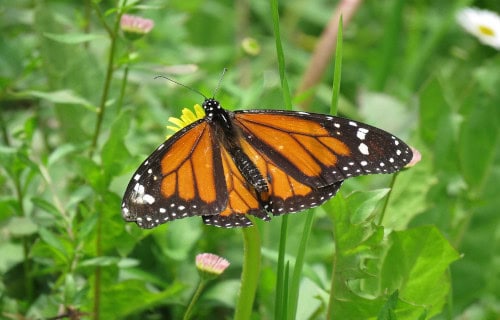
Monarch Butterfly Distribution, Habitat, and Ecology
The stunning Monarch Butterly evolved as native to a relatively broad swathe of the surface of our world. The sheer scope of that zone of habitation might surprise some people, though. That’s true since this insect marvel appears in parts of both the Northern and Southern Hemispheres.
Part of that extends all the way from southern Canada, in North America, to southern South America. It’s also found in Hawaii, Bermuda, the Cook Islands, and other islands in the Caribbean. From there, the insect also appears from Australia to the Philippines, and as far as Morocco.
This wonder of Nature and evolution developed as mainly present in several specific habitat types. Yet it nonetheless displays some degree of versatility and adaptability. Most examples, however, make their home in regions consisting of meadows, grasslands, praries, and along roadsides.
Most examples of the wonder further display a strong preference for the presence of other determining factors. These include such things as proximity to smaller streams, and areas of sufficient sunlight. The awesome creature also prefers the presence of sufficient roosting plant life.
The magnificent Monarch Butterfly also remains world famous for its massive seasonal migrations. A majority of the population migrates to a singly location in Mexico for the winter. Following this, the female lays her eggs during the return trip. These she places on the underside of leaves.
Those eggs most commonly appear on the foliage of milkweed plant. Despite their extreme toxicity to most species, the larvae of this butterfly consume them vorcaciously. Adults typically live 2 -5 weeks. During that time, they too consume vast quantities of nectar from a wide variety of flora.
Pea Blue
Pea Blue Facts
- Appearing next in this compilation of 5 Awesome Australian Lepidoptera we give you the marvelous wonder of Nature named the Pea Blue.
- When people speak of this stunning creation of Nature and evolution, the title most often applied to it is this short but appropriate one. The gorgeous insect also has another, though less often used general name, though. That’s the somewhat descriptive term of long-tailed blue.
- Inside of the scientific community, however, it’s perhaps usually better known by its purely technical label. Thankfully, as such monikers generally go, it’s a relatively simple one for the layperson to pronounce. That’s because it holds the formal designation of Lampides boeticus.
- The beautiful Lepidoptera received that short appellation due to the efforts of Carl Linnaeus. The imminently respected Swedish zoologist accomplished the first recognition of it as a separate and distinct species. He managed that scientifically noteworthy feat in the year 1767.
- Pleasantly, the magnificent Pea Blue appears to be maintaining a population base that’s both stable and sufficient. That uncommon situation further seems to hold true across the entirety of its known range. The IUCN thus currently lists it as Least Concern on its Red List.
- The marvel of Nature and evolution should nevertheless be considered as facing several potential threats to its continued existence as a species, at least. Most of these stem from the actions of mankind. They include the related perils of habitat loss and ongoing climate change.
Pea Blue Physical Description
The delicate wonder known as the Pea Blue typically charms those people fortunate enough to notice the stunning wonder. Unlike some of its relatives, however, it does not do so due to sheer size. That’s true since, though large for its kind, it nonetheless remains a physically small butterfly.
It additionally follows a pattern common to most of those numerous relations, and indeed, all known butterflies. That’s in the fact that it displays a certain degree of the physiolgical characteristic of sexual dimorphism. In its case, though, this trait manifests itself in size and appearance.
In terms of dimensions, the difference remains quite minor, however. Males of the amazing species attain an average wingspan measuring between 0.94 – 1.26 in (2.4 – 3.2 cm). Females, however, reach a very slightly greater mean wingspan. For them, this averages 0.94 – 1.33 in (2.4 – 3.4 cm).
Given these tiny measurements, it’s no particular surprise then that the body evolved as quite small itself. It develops as short and slender in construction. Its length achieves a mean equaling only 0.39 – 0.47 in (1.0 – 1.2 cm). The upper side shows dark brown, while the lower presents as whitish.
It’s the delicate wings of the tiny Arthropod that generally garner the most appreciation from observers, though. This is also the second manner in which it displays the gender-based difference. The two sexes present separate patterns of color, though again, the difference remains quite minor.
Among males of the Pea Blue, the upper side of both beautiful wings typically presents a basic overall background pattern consisting of random shades of bluish-violet. The edges of these, though, most often display varying shades of brown. Two black spots also adorn each hindwing.
The females of the species, meanwhile, show a somewhat different color scheme. That’s because, for her, the majority of the upper side of both wings usually displays shades of brown. She also shows some bluish-violet, but this feature only appears as small spots on each of her rear wings.
Yet, both genders of this lovely insect show the same color pattern below. That consists of a principally ocher background, with smaller white markings. Males and females alike also have one more highly defining natural feature. That’s the remarkable presence of a relatively long, thin tail.
- Kingdom: Animalia
- Phylum: Arthropoda
- Class: Insecta
- Order: Lepidoptera
- Family: Lycaenidae
- Genus: Lampides
- Species: L. boeticus
Pea Blue Distribution, Habitat, and Ecology
The astounding Pea Blue evolved as endemic to an extraordinarily broad swathe of the surface of the earth. The full extent of that expansive zone of habitation might surprise some people, though. It developed as endemic to large sections of Europe, Africa, Australia, and most of Asia.
Within the borders of Asia, however, this amazing invertebrate mostly dwells in either south or southeast portions of the region. Interestingly, it also lives in the Hawaiian Islands. Though unconfirmed with any certainty, it’s presumed it arrived there via the actions of man at some point.
Yet, wherever this wonder of Nature lives, the lovely insect follows the same basic patterns of behavior. Like most of its many kindred around the globe, this marvel of Nature evolved decidedly strong preferences regarding its choice of habitat. This characteristic does limit its choices, though.
Individuals of this species almost exclusively inhabit the same types of ecosystems. These usually consist of regions such as the edges of forests, mountain meadows, and very similar areas with a hot climate and numerous flowers. It also lives at heights reaching up to 8,900 ft (2,700 m).
Impressively, the diminutive yet captivating Pea Blue sometimes produces as many as three generations within the span of a single year. The adults of the species most frequently fly between February to early November. During that period, they often migrate from location to location.
Following mating, the females generally lay their eggs individually, placing them on the surface of flower buds of common host plants. These eggs each usually show white, with a greenish tinge, and have a disc-shaped structure. Each is tiny, averaging only about 0.02 in (0.5 mm) in diameter.
Once hatched, the larvae feed voraciously, which is typical of their kind. To the knowledge of science, they also feed exclusively on the seeds, pods, and flowers of plants in the pea Family, thus the common name. Like their countless relatives, the adults of the beautiful species eat nectar.
Lime Butterfly
Lime Butterfly Facts
- Closing out this article about these 5 Awesome Australian Lepidoptera we give you the stunning product of Nature known as the Lime Butterfly.
- This gorgeous creation of evolution is most often referred to by the especially descriptive common name that we’re using here. Yet it has other titles, used in various parts of its range. They include such terms as lime swallowtail and lemon butterfly, among others.
- Inside the scientific community, however, it’s likely much better known by its purely technical name. Thankfully for the layperson, that’s a comparatively simple one to pronounce, as such things go. That’s because the invertebrate holds the official moniker of the Papilio demoleus.
- The beautiful Lepidoptera received that name due to the efforts of Carl Linnaeus. The eminent Swedish zoologist and botanist recorded the first official recognition of the creature as a separate and distinct species. That scientifically noteworthy deed occurred in 1758.
- The most favored common name refers to its feeding habits. Regardless of the term one chooses to employ, however, it remains an amazing species. Among the many reasons for this is the fact that this wonder of Nature also hosts an impressive six acknowledged subspecies.
- Fortunately, the marvelous Lime Butterfly appears to have a population base that’s both stable and sufficient. That pleasant fact also seems to hold true throughut the entirety of its native range. The IUCN thus presently has no listing for it on the Red List of Threatened Species.
- This diminutive marvel of Nature nevertheless should be considered to be facing several potential threats to its existence as a species, at least. Like many of its kind, most of these stem from the actions of humans. They include such perils as habitat loss and climate change.
Lime Butterfly Physical Description
The stunning Lime Butterfly understandably captures the attention of those people fortunate enough to encounter one. But the Arthropod does so due to more than its beauty. That’s true given the fact that, in addition to that visual appeal, it’s also a moderately large variety of butterfly.
It also stands out from its many peers around the world in another way. That’s because, unlike most relatives, it displays virtually no easily noticeable degree of the physiological characteristic of sexual dimorphism. Distinguishing the genders is thus extremely difficult for most casual observers.
A fully mature adult of both genders of this species attains an average wingspan measuring roughly between 3.2 – 3.9 in (8 – 10 cm). The size of the wings, though, certainly isn’t the only distinctive feature of the insect. Unlike most swallowtails, this one does not display a prominent tail.
Following its evolutionary path, its wings also manifest an intriguing shape. The forewing of both genders has an elongated structure to it. The hindwing of the beautiful Lepidoptera additionally possesses a notably rounded shape to it. The combination makes for a visually striking package.
The wings of the Lime Butterfly also display a very fascinating pattern of color. The upper surface presents a background of deep black. That’s broken by an irregular yellow band, broken on the forewing. Multiple yellow spots show, and a red spot with blue edging also shows on each wing.
The underside, though, displays a distinctly different pattern. A background of black appears near the tips of the wings only. The rest of the entire underside has a background of white or light yellow. Multiple black lines and yellow-orange spots compliment this remarkable natural coloring.
- Kingdom: Animalia
- Phylum: Arthropoda
- Class: Insecta
- Order: Lepidoptera
- Family: Papilionidae
- Genus: Papilio
- Species: P. demoleus
Lime Butterfly Distribution, Habitat, and Ecology
The magnificent Lime Butterfly inhabits a relatively broad expanse of the globe. In fact, it has the greatest range of any known variety of swallowtail butterfly. The precise location of that zone of habitation might surprise many people, though. The insect’s native to Australia and Asia.
In Asia, the marvel appears as far west as Syria and Iraq. To the south, though, it’s present as far as the Philippines and Indonesia. In Australia, it’s even present in most of the region, including New Guinea and Lord Howe Island. It has also now spread to numerous Pacific Ocean islands.
Nature provided this marvel with a surprisingly high degree of adaptability regarding its choice of habitat. Some of the regions in which it makes its home include areas of evergreen and semi-evergreen forests, fallow lands, savannahs, and even residential areas such as small gardens.
It’s also quite prevalent at an impressively wide range of altitudes. In India, the creature is found as high as 7,000 ft (2,100 m) above sea level. The remarkable insect does show a decided preference for the presence of either riverbeds or streams in the areas in which it chooses to live, though.
The breathtaking Lime Butterfly evolved behavioral patterns common to many members of its Family. It usually rests with its wings spread wide. It also rarely flies more than 3.3 ft (1 m) above the ground. During the heat of the day, however, it spends much of its time resting on damp areas.
The female lays her eggs singly, usually on the top of a leaf. The larvae later feed voraciously on a number of local plant species. Both these and the adults often fall prey to many predators, such as spiders and birds. It has the shortest lifespan among its kind, with adults living only 4-7 days.
5 Awesome Australian Lepidoptera
We legitimately hope that each of you fully enjoyed reading, and hopefully learning something from, this article we’ve written about these 5 Awesome Australian Lepidoptera. It’s also our hope that doing so has left you with either a new or renewed appreciation for such wonders of Nature.
Unfortunately, however, many of their innumerbale kindred around the world now find themselves facing strong threats to their continued existence as a species. Many of those dangers, in fact, stem from the actions of mankind. We must each do all we can to protect and preserve them all.
Check out our other articles on 4 Fantastic Woody Shrubs of France, 5 Yosemite Valley Mammals, 5 Fabulous Fauna of Central America, 4 Intriguing New Zealand Insects, The Mighty Tornado
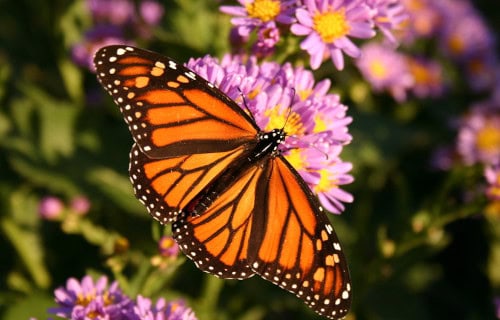
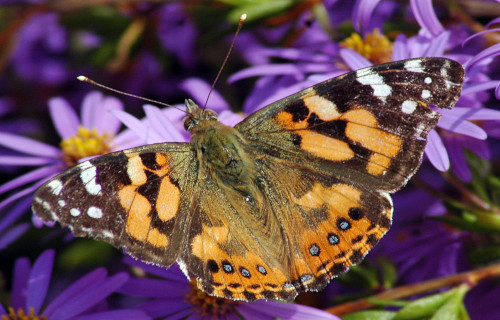
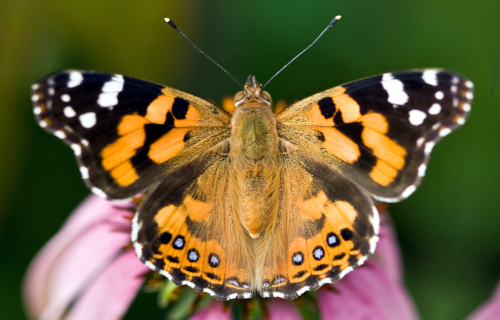
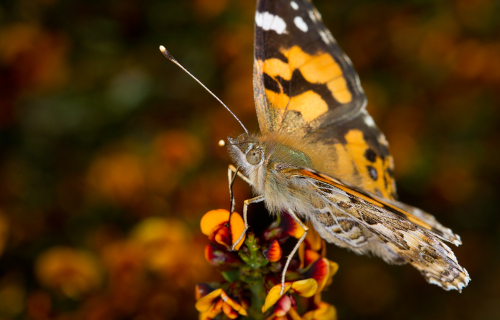
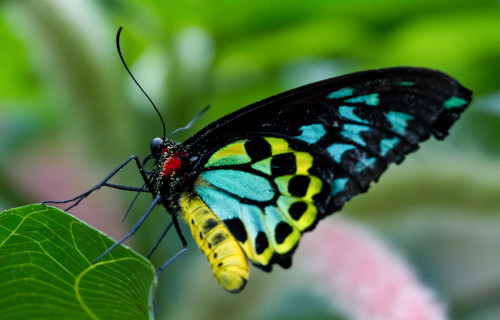
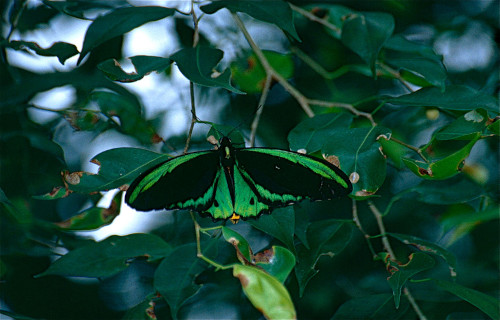
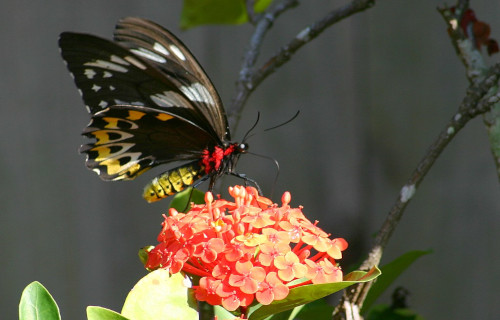
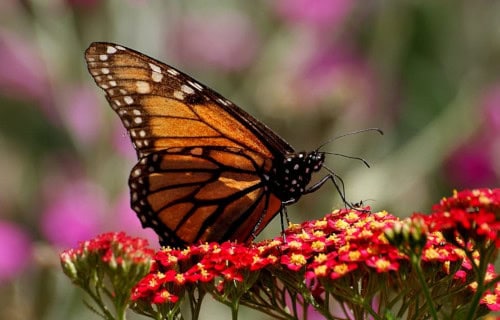
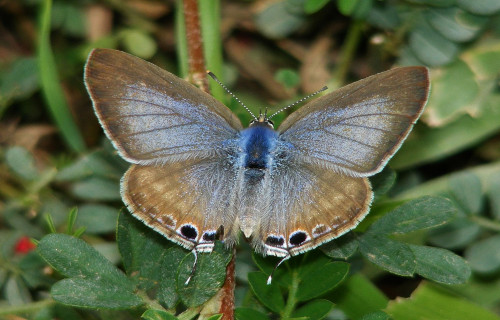
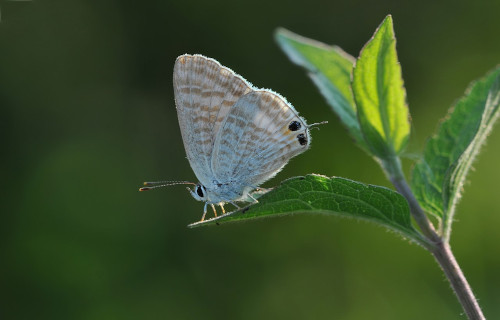
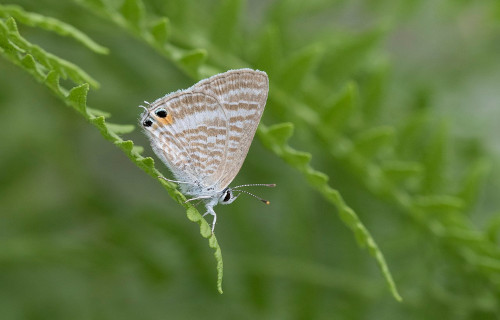
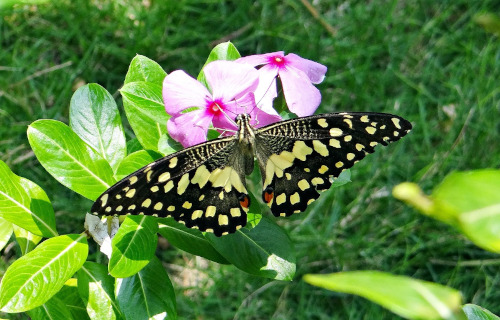
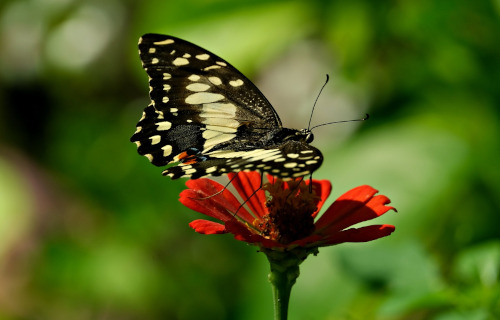
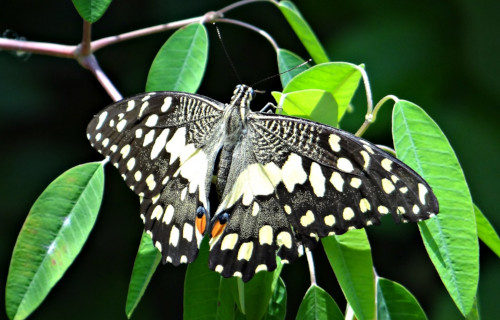









Leave a Reply